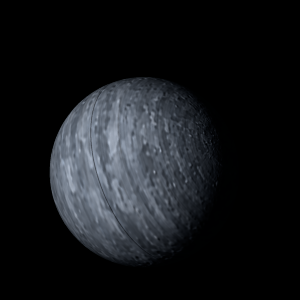|
|
Space Astro
|
Info for exoplanet "Laotheus Nomia"
| Scientific (actual) data |
|---|
| Name | KMT-2019-BLG-0298 b |
| Planet status | Confirmed |
| Planet mass | 1.81 |
| Semi major axis | 5.67 |
| Discovered | 2023 |
| Updated | 2023-02-28 |
| Publication | Published in a refereed paper |
| Detection type | Microlensing |
| Mass measurement type | Microlensing |
| Star name | KMT-2019-BLG-0298 |
| Right ascension | 264.88° |
| Declination | -27.64° |
| Star alternate names | OGLE-2019-BLG-0445 |
| Wikipedia article | KMT-2019-BLG-0298 b |
Back
| |
| Fictional info (?) |
|---|
| Suggested name | Laotheus Nomia |
| Planet type | Cold gas giant |
| When viewed from Earth, this proximity to KMT-2019-BLG-0298 means the planet can only be seen near the western or eastern horizon during the early evening or early morning.
The volume of water ice in the south polar ice cap, if melted, would be sufficient to cover the entire planetary surface to a depth of 14 meters. |
| Atmosphere | Helium | 47% |
| Ammonium hydrosulfide (NH4SH) | 43% |
| Ethane | 4.7% |
| Xenon | 1.9% |
| Hydrogen peroxide | 1.7% |
| Krypton | 0.48% |
| Nitrogen | 0.01% |
| Formaldehyde | 2.3E-5% |
| Atmospheric pressure | 0.16 bar |
 |
| No known satellites |
| Google search for Laotheus nomia |
|
Website by Joachim Michaelis
|
|
|
|